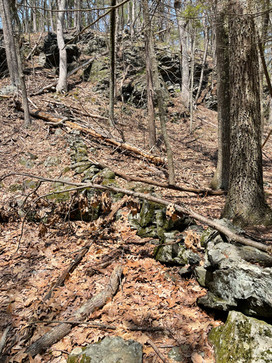April 28. The buzz of spring among sweet nectar blooms - To Lindentree Farm and Mt. Misery
- Nature Seeker
- Apr 28, 2021
- 4 min read
Updated: Jan 13, 2024
April 28, 1860. P. M. To Ed. Hoar's, Lincoln. Warm. 65.
The common Salix rostrata [Salix bebbiana, long-beaked willow] on east side railroad, yesterday at least. S. Torreyana [Salix eriocephala, wand willow] a day or two longer. These willows are full of bees and resound with their hum. I see honey-bees laden with large pellets of the peculiar yellow pollen of the S. rostrata. Methinks I could tell when that was in bloom by catching the bees on their return to the hive. Here are also much smaller bees and flies, etc., etc., all attracted by these flowers. As you stand by such a willow in bloom and resounding with the hum of bees in a warm afternoon like this, you seem nearer to summer than elsewhere.
Again I am advertised of the approach of a new season, as yesterday. The air is not only warmer and stiller, but has more of meaning or smothered voice to it, now that the hum of insects begins to be heard. You seem to have a great companion with you, are reassured by the scarcely audible hum, as if it were the noise of your own thinking. It is a voiceful and significant stillness, such as precedes a thunder-storm or a hurricane. The boisterous spring winds cease to blow, the waves to dash, the migrating ducks to vex the air so much. You are sensible of a certain repose in nature.
Sitting on Mt. Misery, I see a very large bird of the hawk family, blackish with a partly white head but no white tail, probably a fish hawk; sailed quite near, looking very large.
Large ants at work; how long?
-H.D.T.

April 28, 2021.
At 8 a.m. our neighborhood fox trots nonchalantly through our backyard and out a small gap between our fence and our neighbor's.
At 12:45 p.m. I walk into Lincoln's conservation lands, hosting Lindentree Farm, on route to Mount Misery nearby. It is warm at 61 degrees under a cloudy sky. I have not visited here since January 14, when fresh straw covered overwintering crops, and last season's dry stalks of flowers stood in the cold as mementos of the warmer season past to eventually return. And now that season of fresh blooms has arrived! Today, is very much about the flowers, and the insects crawling and buzzing happily about to collect their sweet nectar.
Across the deep lush grass near the entrance of these fields are bright bursts of the humble dandelion, set in a row as if planned and cultivated for their holistic cheerful display. Bumblebees buzz by. The deep purple of common violets stand near the delicate white flowers of mouse-ear cress. In a wide row left fallow, bold yellow field mustard also extends across the field with sprinklings of red and purple (henbit) deadnettles. Looking close at the field mustard, I see honey (or mining) bees actively moving from flower to flower in pursuit of nectar. It is further along the trail west where I find a cultivated pear tree, fully bloomed with white flowers adorned with pink and brown anthers on white filaments. Black ants, various flies and other insects (like the striped cucumber beetle) are crawling all over the blossoms, accompanied by buzzing honey bees - all together moving about in a happy, frenzied harvest.
Moving further west through the massive fields, I see a killdeer in the grass; with every step I make to get closer, it scampers further away, eventually calling out meekly in its retreat. Further out near the edge of the woods, a group of geese graze, eventually flying off loudly in groups of two and three. I hear the calls of a song sparrow in the field and chipping sparrow as I enter the woods.
I follow a trail along the south side of the hill, where Thoreau visited his friend Edward Hoar, who owned land here, this calendar day. (See Thoreau's November 8, 1860 entry describing the woods as new woods of pitch pine and white pines grown in from pastureland). I stop by a thriving wetland swamp with much joyful creature activity. Six small sized turtles sun themselves in a row on a log, and another larger painted turtle crawls out on another to dry off. A great blue heron flies in and alights at the top of a tree. Swallows dive and swoop for insects over the water. Red-wings’ chucking and buzzing fill in the background notes to a cardinal’s song, with geeses' honking filtering in from the east.
I wonder if the stone wall running up Mt. Misery to a cliff is noted in Thoreau’s survey work here. At the top of Mt. Misery I take in a view through the trees of the ponds on the south below a cliff. The mature white pine trees on my descent appear sparse and gladed with little understory. At the edge of the woods as I head east into the field, I walk directly into a breeze. Rather than a hawk, as visited Thoreau, a loud honking crow follows above me from woods to field before ultimately disappearing to the north.





















Comments